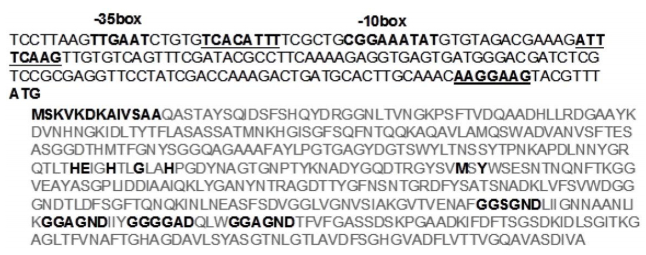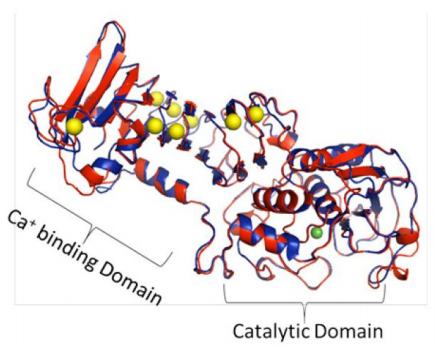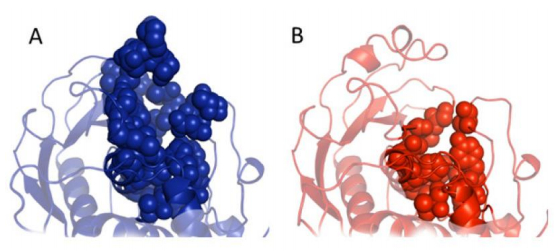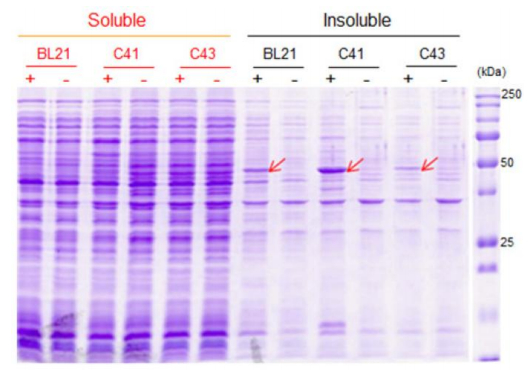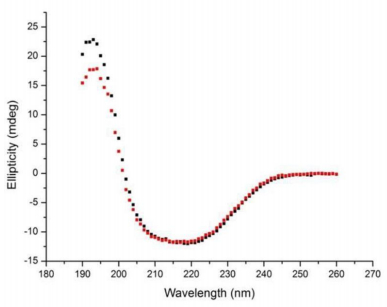1. Introduction
Despite the fact that the world is in a global economic downturn since 2009, the market for enzymes has become much challenging, and has been significantly growing. In 2014, the global market for industrial enzymes invested USD 4.2 billion and it has been estimated that the market will increase an additional 7% by 2020 (India industrial enzyme market: forecast and opportunities 2020; http://www.pharmaion.com/report/india-industrial-enzymes-market-forecast-and-opportunities2020/10.html. Accessed August 19th, 2016). The forecasts suggest a fast-growing market in developing economies (Asia-Pacific, Middle East and Africa), compared to the stable demand in matured economies (Japan, US, Western Europe and Canada). This demand of enzymes mainly satisfies the diagnostic, research and biotechnology, animal feed, and food and beverage industries demands, among others.
Proteases constitute the main product in the industrial enzyme market, followed by carbohydrases and lipases, considered as the fastest growing ones. Proteolytic enzymes (proteases or proteinases) are hydrolytic enzymes responsible for the cleavage of peptide bonds of proteins. Proteases represent 60% of the worldwide market, with applications in many industries (detergent, food, leather, pharmaceutical, etc.) [1,2].
Microorganisms are the most versatile source of industrial enzymes. Mesophilic microbes are actually the source of the majority of enzymes (mesophilic enzymes) used in industrial processes, but psychrophilic microbes have emerged as a source of novel enzymes (psychrophilic enzymes) which show high activity at low temperature and are easily heat inactivated (thermolability). These two properties make them suitable candidates for innovating industrial applications [3]. For reviewing information about characteristics and molecular adaptations of psychrophilic enzymes see Roulling et al. [4].
Many microbes that produce extracellular cold-active proteases have been isolated [5]. The production of extracellular proteases by these microbes is highly affected by the components of the growth media, variation in C/N ration (being casein the best nitrogen source), presence of some easily metabolizable sugars (catabolic repression of protease production by glucose, sucrose and lactose), metal ions, aeration, pH, temperature and incubation time [3,5]. Thus, a cost effective method of enzyme production involves the optimization of components of the medium (30–40% of industrial production cost corresponds to the cost of the growth medium). In addition, most psychrophilic extracellular proteases are produced and secreted during late exponential growth phase at low growth temperatures. Therefore, microbial enzyme production and secretion involves an increasing energy cost related to the slow growing rate of cells (days) and the need of refrigeration to maintain low temperatures. As industrial refrigeration plays a critical role in the business operations, we aimed to identify the coding DNA sequence (CDS) of an extracellular cold-active protease expressed by the Antarctic isolate Pseudomonas sp. AU10 during the stationary phase [6], to produce the enzyme in an easy and low-cost growing cell host such as Escherichia coli, and characterize the biochemical and biotechnological properties of the recombinant enzyme.
2. Materials and Methods
2.1. Bacterial strains, plasmids and media
The cold-adapted extracellular protease-producing Pseudomonas sp. AU10 [6] and Escherichia coli strains were grown in Luria-Bertani broth medium (LB). For extracellular protease production by AU10, cells were grown in MM medium (5% LB and 5% skim milk) [6]. For recombinant expression of proteins, the following E. coli strains were used: BL21 (DE3) pLysS (a λ prophage carrying the T7 RNA polymerase gene and lacIq), BL21-AI (strain carrying the T7 RNA polymerase gene in the araB locus of the araBAD operonq), C41 (DE3) (strain contains a genetic mutation phenotypically selected for conferring tolerance to toxic proteins; derived from BL21 (DE3), C43 (DE) (derived from C41). Terrific broth (TB) and Zym-5052 medium were used for recombinant expression [7].
2.2. Extracellular protease identification by mass spectrometry
AU10 cells were grown in MM (10 ℃ and 200 rpm) until the clarification of the medium (milk coagulation) was evident. The cell-free supernatant was analyzed by 12% SDS-PAGE, and proteins were visualized by Coomassie staining. Selected bands were cut for a further identification by mass spectrometry. In-gel digestion and MALDI-ToF MS was done as described by Piñeyro et al. [8] in the Analytical Biochemistry and Proteomics Unit of the Institute Pasteur (Montevideo, Uruguay). The protein was identified by NCBI database searching with peptide m/z values using the MASCOT software.
2.3. Identification of the protease gene
Based on the amino acid sequence of the peptides determined by the MALDI-ToF analysis, degenerated primers were designed and used to amplify a partial region of the extracellular protease gene. Then, specific outward primers were designed and used in inverse PCR (iPCR) reactions to identify the entire protease CDS. Purified PCR products were cloned in pTZ57R/T, transformed to chemocompetent cells of E. coli DH5α and finally sequenced by Macrogen Inc. (http://www.macrogen.com/; Korea). DNA sequences were analyzed by BLASTx and BLASTn searches at the NCBI web site (http://www.ncbi.nlm.nih.gov/). The nucleotide sequence for the amplified protease was named MP10.
In addition, the AU10 DNA genome was sequenced (Illumina HiSeq 2000 Sequencer, Macrogen), annotated and functionally categorized as described by Morel et al. [9]. The coding sequences for proteases were searched in the RAST server [10], and the MP10 gene was located and the nucleotide sequence was corroborated. The MP10 protease amino acid sequence was submitted to GenBank (Accession number MF375895).
2.4. Protease expression and purification
The gene encoding MP10 was amplified using primers that contain NdeI and XhoI sites (Fw-mp10-p22, CGGGCATATGTCAAAAGTAAAAGACAAAGC and Rev-mp10-p22, TAAATCTCGAGCGCTACGATGTCGCTGGC) and the "RANGER Mix" polymerase of BIOLINE. The amplified fragment was cloned into the pET22b(+) vector (Novagen) (containing a C-terminal 6xHis Tag for IMAC purification), under the control of the T7 promoter. The protease was expressed in the microbial hosts mentioned above.
One colony was grown in 20 mL liquid medium (TB and Zym-5052) overnight at 37 ℃, then acclimated to the temperature for protein expression (10 ℃ to 30 ℃) and diluted to an OD (600 nm) of 0.6. Protein expression was induced by the addition of 1 mM isopropyl-β-d-thiogalactopyranoside (IPTG), in the presence of 30 μg/mL chloramphenicol. Bacterial cells were harvested (1, 2 and 3 h after induction by IPTG) by centrifugation, and cells number were normalized at 2.5 absorbance units at 600 nm using 1.5 M TRIS-buffer (pH 7.5) supplemented with 0.5 M sucrose and 0.2 mg/mL lysozyme. After 30 min incubation at 4 ℃, samples were centrifuged at 7000 g for 5 min and the supernatant was discarded. Spheroplasts were lysed by sonication (in an ice-box for 9 min at 40% relative power output and 0.5 duty period in a Sonic Ruptor 250, Omni International) using the lysis buffer (50 mM TRIS and 150 mM NaCl, pH 7.0) containing lysozyme. Soluble and insoluble (including inclusion bodies) proteins were separated by centrifugation (13800 g, 4 ℃, 15 min). The insoluble fraction was suspended in solubilization buffer (8 M urea, 10 mM Tris-HCl, 0.1 M NaH2PO4, 20 mM imidazole, pH 8.0) containing 1% Triton X-100. Refolding of solubilized inclusion bodies were performed by the dilution method using the following refolding buffer: 50 mM TRIS (pH 7), 150 mM NaCl and 0.100 mM CaCl2. MP10 was purified by chromatography, by binding the refolded proteins to a Ni-NTA affinity resin (Invitrogen), washing with buffer (50 mM TRIS, 150 mM NaCl, 0.100 mM CaCl2 and 30 mM imidazole) and further elution with elution buffer (solubilization buffer supplemented with 400 mM imidazole). All fractions were analyzed by SDS-PAGE. Protein concentration was determined by Bradford assay, using bovine serum albumin as standard.
2.5. Protease characterization and structure prediction
Proteolytic activity was determined using Azocasein as a substrate [11]. One unit of enzyme activity (U) was defined as the amount of enzyme (cell-free supernatant, purified or other protease fractions) required for increasing absorbance at 340 nm by one unit under the assay conditions.
Optimal pH (3 to 10) and temperature (4 to 60 ℃) of purified enzyme were measured under standard conditions. Thermo-stability was determined measuring the residual activity after enzyme incubation at different temperatures. The effect of potentially inhibitory compounds was analyzed: chelating EDTA (metalloprotease inhibitor), PMSF (phenylmethylsulfonyl fluoride; serine protease inhibitor), surfactants (Tween-20, Tween-80 and Triton X-100), and oxidizing agent (hydrogen peroxide). The effect of divalent metal cation (Ca2+, Mn2+, Ni2+, Cu2+, Zn2+) was also tested. Protease stability to different temperatures, surfactants and an oxidizing agent was also analyzed.
Predicted secondary and tertiary structure for MP10 was attained using the HHpred server (Homology detection & structure prediction by HMM–HMM comparison; https://toolkit.tuebingen.mpg.de/hhpred). The reported crystal structure of alkaline metalloproteases (PDB ID: 3V11, 1KAP and 1G9K) from Pseudomonas spp. served as reference. Visualization was done using the Molecular Graphics System Pymol (register number 104107). Surface areas were calculated in Pymol. Pocket surface and volume were calculated using the CASTp (http://sts.bioe.uic.edu/castp/) and Pymol for identification of pockets.
3. Results
The extracellular protease (MP10) produced in MM medium by Pseudomonas sp. AU10 was isolated by SDS-PAGE (Figure 1a) and identified by MALDI ToF-MS (Figure 1b). Results showed that MP10 is a 50 kDa protein highly similar to an alkaline and Zn-dependent metallo-serralysin like-AprX protease of Pseudomonas fluorescens,
P. tolaasii and P. azotoformans (Acc. CAS06691, CAA07697, and CAS06706, respectively). Degenerated primers were used to amplify by PCR a 500 bp partial sequence of MP10 CDS, and the complete CDS and a partial genomic context (upstream and downstream sequences) were searched by iPCR. A 3668 bp fragment was obtained and the sequence homology search evidenced the entirely MP10 CDS (1434 bp, 477 amino acids). This information allowed the identification of the chromosomal region of the target gene (MP10) by searching in the AU10 genome (manuscript in preparation). The genomic organization around the MP10 gene and the comparison with a similar microorganism is shown in Figure 1c. The data suggests that MP10 is part of an operon composed by at least an inhibitor of the protease activity and a system for exportation (ABC-type Ⅰ secretion, TISS). In addition, at the MP10 C-terminal domain, four GGSGND motives involved in calcium-binding and protein exportation through the TISS were found (Figure 2).
In agreement to the results obtained with the MALDI ToF-MS analysis, the sequence analysis using MEROPS database showed that MP10 has 90–94% identity to a Zn-dependent metalloprotease, a serralysin-like M10B subfamily of P. fluorescens, P. rhodesiae and P. azotoformans. Proteases of the family M10 are known as "metzincins", due to a conserved methionine C-terminal involved in zinc binding. The zinc ligands and the catalytic glutamate characteristic of the M10 family are present in the motif HEXXHXXGXXH. The subfamily M10B (model protease—serralysin of Serratia marcescens) contains a glycine-rich C-terminal domain GGXGND involved in calcium ions binding. The occurrence of these motifs in MP10 can be observed in Figure 2.
In silico characterization of MP10 showed that this protein has a theoretical pI of 4.79 and molecular weight of 49.37 kDa. Apparently, MP10 might be synthesized as inactive zymogen, with a 13 amino acids N-terminal pro-peptide, as found by alignment with several M10B zymogen proteases (Figure 1d).
The presence of a set of amino acids implicated in the structural flexibility of cold-adapted proteins has been commonly reported [12,13,14]. Thus, the rate of these specific amino acids in MP10 were recorded and compared with their frequency in the homologous mesophilic extracellular alkaline metalloprotease produced by P. aeruginosa PA01 (Acc. AAG04638; 479 amino acids). The comparison was stated as the number of amino acids in MP10/number of amino acids in the homologous protein in PA01. A decrease in the number of Pro (8/11), Arg (6/8), Asp (37/43) and Glu (6/12), and an increase in the number of Gly (67/55) were detected. These differences are consistent with an increased flexibility of MP10, as compared with the homologous mesophilic extracellular alkaline metalloprotease produced by P. aeruginosa PA01.
The 3D structure of MP10 was predicted and compared to the homologous metalloprotease from Pseudomonas aeruginosa PA01. Two domains, the Ca-binding (three antiparallel, eleven parallel sheets and one alpha-helix) and the Zn-binding (four alpha-helixes and five antiparallel sheet structures) ones were clearly identified (Figure 3). The comparison of MP10 predicted structure with the previously reported structures for mesophilic and psychrophilic alkaline metalloproteases (highest hits in the HHpred server) is shown in Table 1. Results show that all the proteases that have been analyzed display similar surface area; however, the MP10 and the protease 5D7W (produced by S. marcescens) catalytic pockets showed an increased surface and volume as expected for a cold-adapted enzyme (Figure 4), as it has been shown for several psychrophilic enzymes [12].
Table 1. Comparison of structure features of bacterial proteases.
| Protease producing microorganism |
ID in RSCB |
Reported protease characteristics |
Similarity in HHpred |
Surface Area of protein (Å2) |
Pocket Area (Å2) |
Pocket Volume (Å3) |
| Pseudomonas sp. AU10 |
|
Alkaline serine-metalloprotease |
|
46877, 2 |
608, 2 |
894, 1 |
| Pseudomonas aeruginosa PA01 |
3VI1 |
Alkaline metalloproteinase |
61 |
58815, 9 |
215, 5 |
283, 5 |
| Pseudomonas aeruginosa |
1KAP |
Alkaline Zn-metalloproteinase |
61 |
51158, 3 |
189, 9 |
214, 8 |
| Pseudomonas sp. |
1G9K |
Psychrophilic alkaline metalloprotease |
69 |
48897, 8 |
240, 4 |
253, 7 |
| Erwinia chrysanthemi |
1GO7 |
Metalloprotease |
52 |
49989, 0 |
396, 1 |
502, 6 |
| Serratia marcescens |
5D7W |
Serralysin metalloprotease |
56 |
51679, 6 |
613, 5 |
1489, 1 |
| Serratia sp. |
4I35 |
Serralysin |
56 |
54688, 7 |
240, 7 |
362, 2 |
| Pseudomonas sp. TAC Ⅱ 18 |
1H71 |
Psychrophilic serralysin |
69 |
48982, 1 |
161, 3 |
158, 2 |
| Erwinia chrysanthemi |
1K7i |
Secreted metalloprotease |
51 |
50255, 4 |
422, 6 |
666, 7 |
Upstream MP10 CDS, a putative promoter consensus sequence (found by BPROM, Promoter Finding in Bacteria; sigma 70 promoter recognition program; http://linux1.softberry.com/berry.phtml?topic=bprom&group=programs&subgroup=gfindb) was detected (Figure 2). Sigma 70 is the major sigma factor that controls the expression of most genes in the stationary phase. In addition, a Shine-Dalgarno sequence (predicted at -7 and -14 from the ATG start point) and two possible transcription factor binding sites (crp, cyclic AMP receptor protein, a global transcription regulator that activates genes required for catabolism of alternative carbon source in E. coli and purr, a transcriptional repressor of the pur operon, purine biosynthesis) were identified. As stated above, downstream the MP10 CDS, an ORF homologous to a protease inhibitor and a partial sequence corresponding to TISS involved in enzyme exportation were found.
MP10 CDS was entirely cloned into the expression vector pET22b(+), transformed to different E. coli hosts and, different conditions for MP10 expression were assayed as described in Materials and Methods. Results showed that the recombinant MP10 was produced as insoluble aggregates, resulting in the formation of inclusion bodies (IB) at 30 ℃, in all tested strains (Figure 5). As the solubility of some recombinant proteins is improved by performing the expression at suboptimal growth temperatures, the production of MP10 was also evaluated at 12 ℃ (data not shown). Unfortunately, the turbidity of the cultures transformed with the expression vector decreased when it was transferred from 30 to 12 ℃, suggesting that at low temperature MP10 was actively toxic, thus inducing cell lysis. The cell-free supernatant showed protease activity, reinforcing the hypothesis that MP10 is highly toxic in this condition, inducing cell lysis and the release of intracellular proteins. Thus, for further MP10 purification, the E. coli C41 recombinant strain was used and the protein expression was performed at 30 ℃ (high protein expression, minimized lysis of the recombinant strain).
MP10 was successfully purified using the refolded protein (by the dilution method) and subsequent IMAC as described in Materials and Methods, yielding 1.5 mg of MP10 per liter of culture (109.7 U/mg proteins). Purified MP10 was used for a partial biochemical characterization. The measurement of enzyme activity at different pHs showed that MP10 has optimal activity around pH 8 (data not shown). The effect of different temperatures on protease activity was also determined (data not shown) showing that the activity increases with temperature to a maximum level at 40 ℃ (60% and 20% activity at 30 ℃ and 10 ℃, respectively, compared to 40 ℃). Experiments of thermal stability showed that MP10 is a thermosensitive enzyme, showing a 20% residual activity after 10 min of incubation at 40 ℃ and, 100% and 0% residual activity after 20 min incubation at 30 ℃ and 45 ℃. This general behavior may be ascribed at a higher thermal inactivation rate constant in comparison to the Arrhenius activation energy, both well-established thermal parameters. Interestingly, the study of the native and recombinant MP10 structure in solution by circular dichroism (CD) showed that the in vitro folding of the recombinant enzyme did not induce a significant change in the protein conformation with respect to the native enzyme (Figure 6).
The effect of a few potential inhibitors on MP10 activity was analyzed. The addition of 5 mM EDTA or PMSF reduced the residual activity to 19% and 50%, respectively, suggesting that MP10 is a serine-metalloprotease. As MP10 does not contain cysteines, the effect of cysteine-protease inhibitors was not analyzed. Most analyzed divalent cations reduced the protease activity, but calcium (1.5 mM CaCl2) slightly induced MP10 activity (10%) (Table 2). Interestingly, 7% of non-ionic surfactants Triton X-100, Tween-80 and Tween-20 (gentle surfactants that disrupt lipid-lipid and protein-lipid associations) did not affect MP10 activity (Table 2). In addition, experiments of stability to surfactants showed 85–90% residual activity of MP10 after 60 min of incubation (enzyme stability with 7% surfactants). The addition of the oxidizing agent hydrogen peroxide at 1.5% increased the activity by 67%; and stability experiments showed that the enzyme maintains 100% residual activity after 60 min incubation with 1.5% H2O2. These features make MP10 compatible to detergent formulations.
Table 2. Effect of a few divalent cations (chloride salts) on recombinant MP10 activity.
|
Metal concentration (mM) |
Residual activity (%) |
| Control; without metal |
0 |
100 |
| Mn2+ |
1.5 |
80 |
| 15 |
25 |
| Ni2+ |
1.5 |
69 |
| 15 |
11 |
| Zn2+ |
0.0015 |
96 |
| 0.015 |
80 |
| 0.15 |
47 |
| 15 |
25 |
| 15 |
33 |
| Ca2+ |
0.15 |
143 |
| 1.5 |
110 |
| 15 |
80 |
| Cu2+ |
1.5 |
30 |
| 15 |
16 |
4. Discussion
Protease-producing bacteria are common inhabitant of Antarctica, including King George Island, with an important role in decomposing organic materials in their oligotrophic natural environment [6,15,16]. The relevance of protease activity in extreme environments may be also evidenced by the fact that a horizontal protease gene transfer event has been detected in the Antarctic environment [17].
The Pseudomonas sp. AU10 genome encodes a variety of proteases, at least: seven metalloproteases, six serine-proteases, four cysteine-proteases, one alkaline protease and many miscellaneous proteases have been detected. Here, we describe an extracellular metalloprotease produced by this bacterium. This protein was identified, and the recombinant enzyme was produced in E coli, purified by IMAC and partially characterized. The information supports that MP10 is a 50 kDa protease secreted by a TISS. Six classes of secretion systems have been identified in Gram-negative bacteria. The ABC protein exporter system is currently used for the exportation of metalloproteases, but also toxins and lipases, among others. The TISS has three components (ATP-binding cassette, membrane fusion protein and outer membrane protein) [18]; these elements have been identified downstream the MP10 gene (Figure 1c).
MP10 showed characteristics of psychrophilic enzymes. These enzymes usually present a higher degree of structural flexibility (global or restricted to the catalytic regions), low thermo-stability and higher catalytic activity at low temperatures compared with their mesophilic counterpart [12,19]. Results shown in this work suggest that MP10 presents a large catalytic region (or catalytic pocket) and a high degree of structural flexibility. Differences in various mechanisms may explain the increased enzyme flexibility and activity; for example, the lower content of arginine and proline, and the higher number of glycine residues. These differences mean a reduced number of hydrogen bonds and salt bridges, and an increased local mobility.
Usually, wild enzyme-producing microbes are not the best cell factory for large-scale production of enzymes, mainly for cold-adapted microbes because cooling is an energy costly process. In addition, the growth media composition and commercial origin of reagents may determine the successful production of an enzyme. In this framework, the production of native MP10 was analyzed using the wild type AU10 strain growing in LB and PFm media [20] at 15 ℃. In independent experiments, three different commercial tryptone were added, and results showed that MP10 was produced in PFm medium, but only when tryptone from Difco was used (data not shown). Similar results were obtained by Nicodeme et al. [21] and Dufour et al. [22]. Nicodeme et al. suggested that the production of extracellular proteases by Pseudomonas spp. depends on the culture conditions, showing that the addition of skim milk to the culture medium induces 10 to 20-fold the expression of proteases. A similar result was also informed by Martinez-Rosales and Castro-Sowinski [6]; the authors reported that AU10 may produce the MP10 protease only in the presence of skim milk as substrate.
Both high cost of cooling and incertitude on growth composition (origin of growth components) justify the use of recombinant DNA technology for the large scale production of MP10 at laboratory or industrial level. As well, many Pseudomonas species are opportunistic pathogens, and their uses at agronomic and industrial scale generate public concern. Thus, we faced the recombinant production of MP10 using E. coli, a host with a well-known genomic context that has been commonly employed for the industrial production of recombinant proteins.
The MP10 recombinant E. coli C41 and C43 strains (frequently used for the expression of toxic genes) allowed the production of significant levels of MP10 at 30 ℃. Thus, MP10 was successfully produced as recombinant protein, but the protein was incorporated in IB in all tested conditions, reinforcing the hypothesis that MP10 might be toxic to E. coli.
The genomic context of MP10 suggests that this protease is part of a transcriptional unit that includes a putative protease inhibitor and the secretion machinery. This operon-like organization resembled the Apr-operon organization (protease AprX, inhibitor, and AprDEF coding for the TISS) of P. fluorescens SBW25. This organization has also been observed in other Gram-negative bacteria such as Erwinia chrisantemi, E. coli and other species of Pseudomonas spp. [23,24,25]. The putative inhibitor might be fundamental to keep this extracellular enzyme inactive during its passages through the periplasmic space, further preventing the proteolytic degradation of other proteins [26]. This assumption is being supported by the fact that the putative MP10 inhibitor possesses an N-terminal signal peptide for exportation, as determined using the SignalP 4.1 server (http://www.cbs.dtu.dk/services/SignalP/). This result suggests a periplasmic localization of the inhibitor where it would plays an inhibitory function.
We achieved the MP10 expression using the recombinant C41 strain at 30 ℃ and in vitro folding from IB. The formation of IB might represent an advantage because the recombinant protein used to be the main component of aggregates [27], facilitating the purification of the protein at industrial level. In addition, except at the range of 185–200 nm, both native and recombinant DC showed quite similar spectra. The difference might be due to a small proportion of denatured recombinant protein; however, the result suggests that both proteins display similar structure. Thus, probably native and recombinant MP10 might show similar properties.
The partial biochemical characterization showed that MP10 is an alkaline, thermo-sensitive, serine-metalloprotease, with an amino acid profile and predicted 3D structure characteristic of a cold-adapted enzyme. In addition, it showed maximal activity at 40 ℃, a characteristic of psychrophilic enzymes. As reviewed by DxAmico et al. [12], mesophilic and psychrophilic enzymes show maximal temperatures of activities around 30 ℃ and 60 ℃, respectively.
MP10 was activated by low concentrations of calcium; however, low concentrations of zinc produce inactivation probably due that zinc displaces calcium at its binding sites. The role of calcium in a serralysin-type alkaline metalloprotease produce by a Pseudomonas sp. isolated from refrigerated milk was deeply analyzed by Ertan et al. [28]. This protein showed similar biochemical properties to MP10, including the increase of the enzyme activity by the addition of low concentration of calcium chloride (150% activity by the addition of 5 mM Ca2+), among others.
Interestingly, MP10 was highly active and showed stability after 60 min incubation with non-ionic surfactants and hydrogen peroxide, suggesting that MP10 might be used in detergent formulations, which allows washing of textiles at room temperature. Compared with the alkaline proteases produced by the marine bacterium Pseudoalteromonas sp. 129-1 (residual activity up to 98% and 112% in 1% nonionic surfactants and 1% hydrogen peroxide, respectively, for 30 min) [29], the fungus Aspergillus terreus gr. (200% and 100% residual activity in 5% non-ionic surfactants and 5% hydrogen peroxide, respectively, for 30 min) [30] and the seawater haloalkaliphilic bacterium Bacillus sp. Ve2-20-91 (80% stability in 1% Tween-20 and marginally enhanced activity in 1% Tween-80 and Triton X-100, for 30 min) [31], the recombinant MP10 shows a promising potential for sustainable cloth washing (higher activity and stability to non-ionic surfactants and hydrogen peroxide).
Detergent enzymes are usually incorporated into dust-free granulates for use in detergent powders, but they are also used for liquid preparations and slurries of the enzyme in a non-ionic surfactant for removing stubborn stains. Among others, hospital laundries employ continuous washing machines, which includes a pre-rinse initial stage, a first wash at high temperature and pH 11, then to a second wash containing hydrogen peroxide, and finally to a bleaching stage and rinsing. Thus, the use of hydrogen peroxide detergent enzymes may facilitate the laundry procedure. Thence, the formulation of detergents containing MP10 sounds as a good opportunity even for hospital laundries. Future work will deal with the full characterization of MP10 industrial likely uses.
5. Conclusion
We report the identification, recombinant production and characterization of an extracellular protease produced by the Antarctic psychrotolerant bacterium Pseudomonas sp. AU10. The results showed that the enzyme is an alkaline serine-metalloprotease with biochemical characteristics that resemble psychrophilic enzymes. Experiments of activity and stability to surfactants and to an oxidizing agent suggest that this protease might have a potential use in the detergent industry.
Acknowledgments
This work was partially supported by PEDECIBA. The work of NF was supported by ANII (Agencia Nacional de Investigación e Innovación). The authors thank the Uruguayan Antarctic Institute for the logistic support during the stay in the Antarctic Base Artigas. S. Castro-Sowinski, M. Marín and J. J. Marizcurrena are members of the National Research System (SNI, Sistema Nacional de Investigadores).
Conflicts of Interest
The authors declare that they have no conflict of interest.









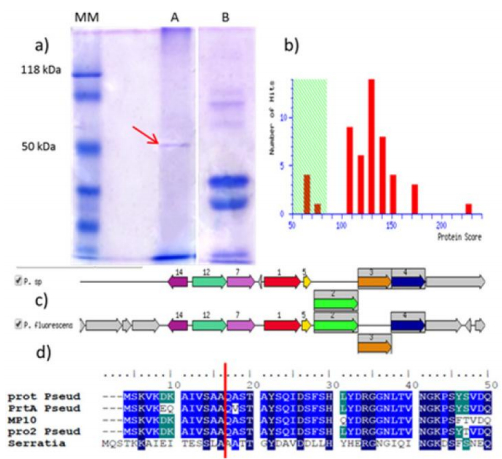
 DownLoad:
DownLoad: 